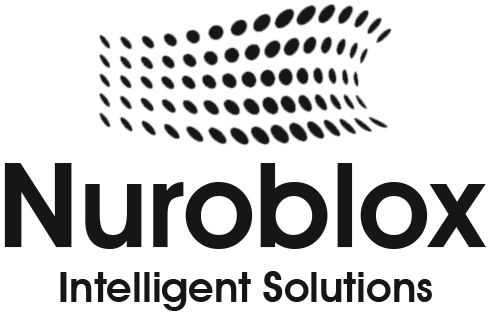Low-Code AI Workflows That Save Time and Cut Costs
Nowadays, businesses are under constant pressure to innovate, automate, and reduce costs – all without stretching limited technical resources. Artificial Intelligence offers a powerful solution, but traditional AI development is often time-consuming, expensive, and dependent on specialized talent.
Enter low-code AI workflows a smarter, faster way to build and deploy intelligent automation using intuitive, visual tools that require little to no coding expertise.
With low-code platforms, companies can rapidly automate processes, unlock insights from data, and create intelligent applications without relying on full-scale data science teams. The result? Significant time savings, lower development costs, and faster ROI.
In this blog, we’ll break down what low-code AI workflows are, how they deliver real business value, and why they’re becoming a must-have strategy for modern enterprises.
How Low-Code AI Workflows Save Time
Time is one of the most valuable assets in any business. Traditional AI development often involves long project cycles, complex integrations, and heavy reliance on highly skilled developers and data scientists. Low-code AI workflows turn that model on its head by dramatically reducing the time it takes to build, test, and deploy intelligent systems.
Here’s how low-code AI saves time at every stage of the workflow:
1. Rapid Development with Visual Interfaces
Low-code platforms provide drag-and-drop environments that simplify complex AI processes. Instead of writing hundreds of lines of code, users can configure models, workflows, and logic visually.
- No need for deep programming knowledge
- Business and IT teams can build together in real-time
- Faster prototyping and iteration cycles
2. Prebuilt AI Components and Integrations
Most low-code AI platforms come with ready-to-use components for common tasks such as natural language processing, image recognition, sentiment analysis, and predictions.
- Skip the data science modeling from scratch
- Easily connect to databases, CRMs, ERPs, or cloud services
- Focus on outcomes, not infrastructure
3. Faster Deployment and Scaling
Deploying traditional AI models often involves coordination across DevOps, IT security, and product teams. Low-code platforms automate much of this, allowing for one-click deployment or seamless cloud integration.
- Launch workflows in days, not months
- Reduce time-to-value for AI investments
- Easily scale or clone workflows across departments
4. Reduced Learning Curve for Teams
Because of intuitive UI and built-in tutorials, low-code tools allow business analysts, operations staff, and non-developers to contribute to AI projects without waiting on overloaded engineering teams.
- Empowers more employees to innovate
- Cuts down on training and ramp-up time
- Increases collaboration across technical and business units
5. Agile Experimentation and Iteration
With low-code, teams can quickly test AI ideas, get feedback, and improve workflows on the fly. This supports a more agile approach to automation.
- Shortens the feedback loop
- Encourages experimentation without major investment
- Helps find what works faster
Low-code AI workflows accelerate automation from concept to execution. By removing technical bottlenecks and simplifying development, they help businesses innovate faster, stay competitive, and make better use of their time and talent.
How They Cut Operational Costs

Beyond speeding up development, low-code AI workflows deliver another major advantage—reducing operational costs. Traditional AI initiatives can drain budgets through long project timelines, high developer salaries, and complex infrastructure. Low-code platforms streamline these demands, enabling businesses to achieve more with less.
Here’s how low-code AI helps cut costs across the board:
1. Lower Development and Maintenance Expenses
Hiring skilled AI engineers and developers is expensive, and traditional workflows often require large, specialized teams. Low-code tools reduce that dependency by enabling smaller, cross-functional teams to build and maintain AI solutions.
- Minimize reliance on full-stack AI engineers
- Reduce long-term technical debt and maintenance cycles
- Empower business users to make updates without coding
2. Faster Time-to-Value = Faster ROI
The quicker a workflow goes from idea to implementation, the sooner it starts delivering value. Low-code AI enables faster deployment, which means reduced overhead and earlier impact.
- Shrinks time between planning and returns
- Frees up resources to focus on higher-priority tasks
- Avoids lengthy proof-of-concept investments
3. Reduced Infrastructure and IT Support Costs
Many low-code platforms are cloud-native or come with pre-configured environments, which reduces the need for heavy backend setup and maintenance.
- No need to build or manage infrastructure from scratch
- Pay-as-you-go models reduce upfront investment
- Simplified hosting, deployment, and scaling
4. More Efficient Use of Existing Resources
Low-code tools help companies do more with their current teams. Non-technical staff can handle automation tasks, while technical teams focus on more complex challenges.
- Maximize productivity of both IT and business units
- Avoid overloading high-cost technical roles
- Reduce outsourcing or consulting expenses
5. Minimized Training Costs
Because low-code platforms are designed to be user-friendly, the training curve is significantly lower. Teams can get up and running quickly without expensive boot camps or certifications.
- Reduce onboarding time for new hires
- Eliminate the need for deep AI expertise at every level
- Leverage intuitive interfaces and built-in documentation
Low-code AI doesn’t just save time it creates measurable cost savings. By streamlining development, reducing infrastructure demands, and empowering broader teams, organizations can drive innovation without driving up costs.
Getting Started: Best Practices
Adopting low-code AI workflows can transform your business but to get the most out of it, you need a clear strategy. Whether you’re automating a process for the first time or scaling across departments, these best practices will help you get started efficiently and avoid common missteps.
1. Start with a Clear Business Problem
Begin by identifying a high-impact, low-complexity use case. Focus on tasks that are repetitive, time-consuming, and rule-based where automation can quickly deliver measurable results.
- Example: Lead scoring, invoice processing, or customer support ticket triaging
- Align AI workflows with KPIs like cost reduction, faster turnaround, or improved accuracy
2. Involve Both Business and Technical Teams
Low-code platforms are most effective when business users and IT teams collaborate. Business stakeholders understand the process, while IT ensures compliance, security, and integration with existing systems.
- Break silos early in the process
- Assign clear ownership across teams
- Use shared tools and documentation for transparency
3. Choose the Right Low-Code AI Platform
Not all platforms are created equal. Evaluate your needs based on ease of use, scalability, integration options, data privacy, and prebuilt AI capabilities.
- Look for platforms that support drag-and-drop AI components
- Ensure it integrates well with your existing systems (e.g., CRM, ERP, databases)
- Prioritize security, governance, and auditability features
4. Start Small, Scale Smart
Launch a pilot project before going enterprise-wide. A successful small-scale implementation helps gain internal support, surface hidden issues, and set the foundation for larger rollouts.
- Test your workflow with real users
- Track impact and gather feedback
- Use insights to improve and expand gradually
5. Monitor, Measure, and Optimize
Don’t treat your AI workflows as “set it and forget it.” Build in continuous monitoring to track performance, detect errors, and ensure long-term ROI.
- Set KPIs (e.g., cost saved, hours automated, accuracy rate)
- Regularly review logs, outcomes, and user feedback
- Update workflows as business needs or data sources change
Success with low-code AI starts with a thoughtful, business-aligned approach. By identifying the right use cases, fostering cross-team collaboration, and focusing on continuous improvement, your organization can unlock real value quickly and at scale.
Conclusion
Low-code AI workflows are redefining how businesses approach automation and innovation. By eliminating the need for deep technical expertise and lengthy development cycles, these tools empower teams to build and deploy intelligent solutions faster and more affordably.
From accelerating time-to-market to significantly reducing operational costs, low-code AI enables organizations to do more with less, making AI adoption accessible, scalable, and impactful.
The key is to start with the right use cases, bring business and IT teams together, and follow best practices that balance speed with long-term value. As the technology continues to mature, low-code AI isn’t just a shortcut it’s a strategic advantage for any business looking to stay competitive in a fast-changing world.
Now is the time to explore low-code AI and unlock smarter workflows without the traditional barriers.


